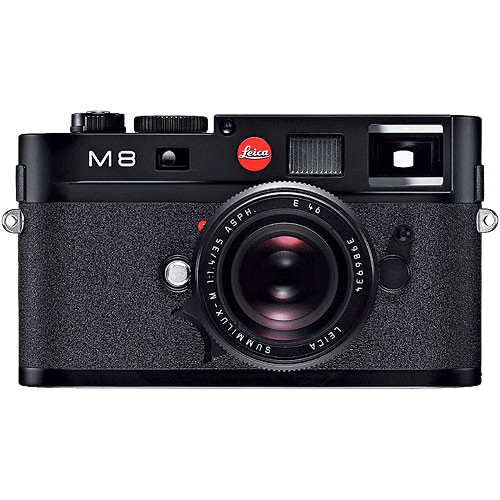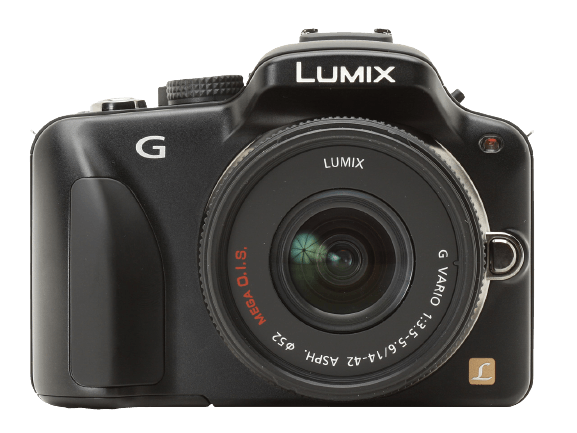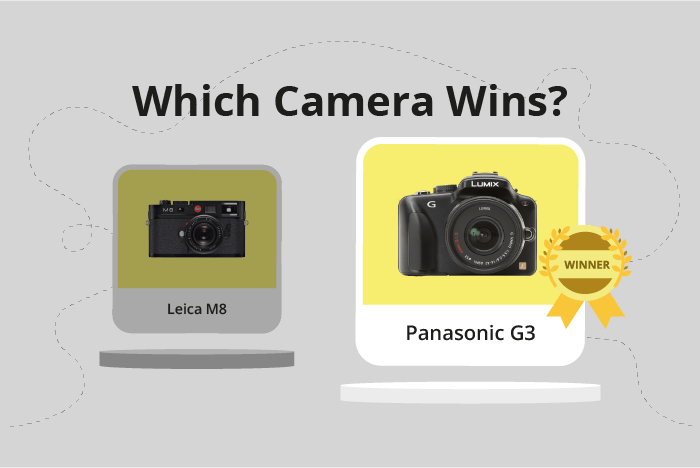Leica M8 vs Panasonic Lumix DMC G3 Comparison
Leica M8

Panasonic Lumix DMC G3

The Panasonic Lumix DMC G3 outperforms the Leica M8 with a score of 42/100 compared to the M8’s 35/100. Both cameras are mirrorless and were released in 2006 and 2011, respectively. The M8 has a launch price of $5495, while the G3 is priced at $599.
Both cameras share similarities in their mirrorless design. However, the G3 has a higher score due to its advantages in size and weight. The G3 measures 115 x 84 x 47mm and weighs 336g, making it more compact and lightweight than the M8, which measures 139 x 80 x 37mm and weighs 591g.
Despite its lower score, the Leica M8 does have some benefits, such as its premium build quality and a higher launch price, which may appeal to professional photographers or collectors.
Taking all factors into account, the Panasonic Lumix DMC G3 is the better choice for those seeking a compact and lightweight camera, while the Leica M8 may be more suitable for those who prioritize build quality and prestige.
Leica M8 vs Panasonic Lumix DMC G3 Overview and Optics
The Leica M8 wins the optics comparison with a score of 43/100, while the Panasonic Lumix DMC G3 scores 42/100. Both cameras share some common specifications, such as the absence of image stabilization and the same lens mount type.
The Leica M8 has a 10.3-megapixel CCD sensor, an APS-H sensor size, and a DXOMARK score of 59 for its sensor. The M8’s larger sensor size contributes to its better image quality. Additionally, the Leica M8 features a Maestro II processor and a 3:2 aspect ratio, which may produce more pleasing images for certain photographers.
On the other hand, the Panasonic Lumix DMC G3 has a higher megapixel count at 16, a faster shooting speed of 4 frames per second, and a Live MOS sensor. The G3’s higher megapixel count allows for more detailed images, and its faster shooting speed is advantageous for capturing fast-moving subjects. However, the G3 has a smaller Micro Four Thirds sensor size and a lower DXOMARK score of 56 for its sensor. The G3 also has a Venus Engine FHD processor and a 4:3 aspect ratio.
Despite the Leica M8’s higher score, the Panasonic Lumix DMC G3 has its own advantages in terms of megapixels and shooting speed. Ultimately, the choice between these two cameras depends on the photographer’s preferences and needs. The Leica M8 may be more suitable for those prioritizing image quality, while the Panasonic Lumix DMC G3 may be better for photographers who require faster shooting speeds and higher-resolution images.
Leica M8 vs Panasonic Lumix DMC G3 Video Performance
When examining the video capabilities of the Leica M8 and the Panasonic Lumix DMC G3, it is important to note that the Leica M8 does not have any video functionality. This means that for those looking for a camera with video recording capabilities, the Leica M8 would not be a suitable option. On the other hand, the Panasonic Lumix DMC G3 offers video recording features that may appeal to users interested in capturing moving images.
The Panasonic Lumix DMC G3 has a video score of 56 out of 100. This camera can record Full HD video with a maximum resolution of 1920 x 1080, providing clear and detailed footage. Additionally, the Lumix DMC G3 can capture video at a maximum frame rate of 60fps, ensuring smooth and seamless motion in recorded video. However, it is worth mentioning that the camera does not have built-in time-lapse functionality.
Considering the video capabilities of both cameras, it is clear that the Panasonic Lumix DMC G3 is the better choice for those prioritizing video recording features. The Leica M8, lacking video functionality, may not meet the needs of users who require video capabilities in their camera. Ultimately, potential buyers should consider their specific needs and preferences when deciding between these two cameras.
Leica M8 vs Panasonic Lumix DMC G3 Features and Benefits
The Panasonic Lumix DMC G3 outperforms the Leica M8 in features with a score of 49/100, a significant 32 points higher than the Leica M8’s 17/100. Both cameras share some common specifications, such as the absence of GPS, WIFI, and Bluetooth connectivity.
The Lumix G3 surpasses the Leica M8 in several aspects. First, its screen size measures 3 inches, compared to the M8’s 2.5 inches, providing a larger display for better image review and composition. Second, the G3 boasts a higher screen resolution of 460,000 dots, doubling the M8’s 230,000 dots for a sharper and clearer display. Additionally, the G3 features a touchscreen for more convenient and intuitive control, while the M8 lacks this functionality. Finally, the G3 offers a flip screen, enabling users to capture images from various angles and facilitating self-portraits, a feature absent in the M8.
Although the Leica M8 trails in features, it may still appeal to photographers who prefer a camera with a more straightforward interface and fewer bells and whistles. The M8’s simpler design could be an advantage for those who prioritize ease of use and a more traditional photography experience.
Considering these points, the Lumix G3 emerges as the superior camera in terms of features, offering a larger, higher-resolution screen, touchscreen capabilities, and a flip screen. The Leica M8, on the other hand, may suit photographers seeking a minimalistic, no-frills approach to capturing images. Ultimately, the choice between these two cameras depends on the individual’s preferences and priorities.
Leica M8 vs Panasonic Lumix DMC G3 Storage and Battery
The Leica M8 emerges as the winner in the storage and battery comparison, scoring 29 points, while the Panasonic Lumix DMC G3 scores 16 points. Both cameras have one memory card slot and accept SD and SDHC memory cards. Neither camera supports USB charging.
The Leica M8 outperforms the Panasonic Lumix DMC G3 in battery life, offering 550 shots per charge compared to the G3’s 270 shots. This longer battery life makes the M8 more suitable for extended shooting sessions. The M8 uses a BP-SCL1 battery, while the G3 uses a DMW-BLD10 battery.
The Panasonic Lumix DMC G3 has a slight advantage in storage flexibility, as it accepts SDXC memory cards in addition to SD and SDHC cards. This allows for larger storage capacity and faster transfer speeds.
Considering both storage and battery performance, the Leica M8 is the better choice due to its longer battery life. However, the Panasonic Lumix DMC G3 offers a small advantage in storage options with the compatibility of SDXC cards.
Leica M8 vs Panasonic Lumix DMC G3 – Our Verdict
Are you still undecided about which camera is right for you? Have a look at these popular comparisons that feature the Leica M8 or the Panasonic Lumix DMC G3:

